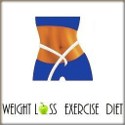-
Fat Traps: 6 Food Norms that Destroy Your Diet
Sunday, November 9th, 2025by Brigid Titgemeier, M.S., Public Health Nutrition
As human beings, our behaviors and choices are shaped by cultural norms. In the United States we learn to stand in line at a coffee shop, drive on the right side of the road, and greet people with a handshake – not from reading a manual but from observing standardized behaviors.
Like all human behaviors, research shows that our eating habits are shaped by cultural and environmental factors. The culture of the United States is one that accepts advertisements and increased accessibility to harmful food as the norm.
With this in mind, it should come as no surprise that adults in the U.S. have greater odds of being overweight or obese than of being ‘normal’ weight. The truth is that an unhealthy food environment and unhealthy individuals go hand-in-hand.
As you make an effort to adopt healthier dietary habits, consider how often your choices are influenced by the environment, the habits of others, and your perception of what is ‘normal’ with regards to food.
As human beings we are inevitably influenced by the external environment; the key is recognizing these influences and making conscious decisions that are in your own best interest.
Do your best to avoid these six food norm ‘fat traps’ that can lead to an internal acceptance of poor dietary habits:
Fat Trap #1: Free Food
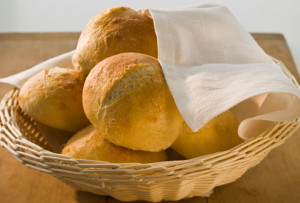 As the old saying goes, nothing in life is free – and that includes the bread basket at restaurants.
As the old saying goes, nothing in life is free – and that includes the bread basket at restaurants. While it may not be added to your bill, the calories are added to your waistline because the body has no way of knowing that the bread is on the house.
The same is true for soda served on airplanes or any other unhealthy food that is given away.
Don’t confuse ‘free’ on your wallet with ‘free’ on your waistline.
Fat Trap #2: The “Value” Meal
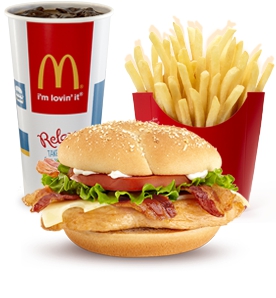 You may have pulled into the drive thru lane with the intention of ordering a grilled chicken sandwich but you pulled out with 600 additional calories in the bag.
You may have pulled into the drive thru lane with the intention of ordering a grilled chicken sandwich but you pulled out with 600 additional calories in the bag. Going for the combo meal seemed like a smart financial investment but you didn’t consider the consequences of consuming 600 additional calories from the medium French fry and refreshing soft drink.
Studies show that price incentives effectively influence individual food purchases, which is why fast food companies strategically highlight their combo meals.
Next time you eat out, order only what you are hungry for and start to see the value of actually saving money – and calories.
Fat Trap #3: Bucket-o-Popcorn at the Movies
From popcorn at the movie theater to hot dogs at a baseball game, our culture has been programmed to believe that eating certain foods can enhance an experience.
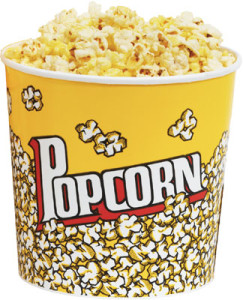
One study compared individuals who were given fresh popcorn in a medium-size container at a movie theater to those given stale popcorn in a large container.
The group with the stale popcorn consumed 38% more overall, which was likely attributed to the large container size.
The researchers found that the stale, cardboard texture did not deter people from devouring the popcorn at the movie theater, illustrating that the taste of the food was not the driving force for people’s consumption.
In the future, increase your awareness of the flavors and textures of your food.
Avoid eating mindless calories and reassure yourself that you can have fun at movies and sporting events — with or without the junk food.
Fat Trap #4: Bringing an Unhealthy Team Snack
Parents are often convinced by other parents or their own child that the team won’t like the team snack if it’s healthy.
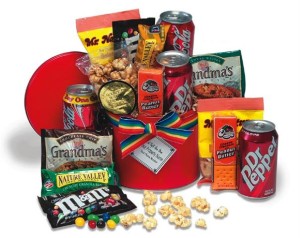 A new study suggests that the food environment of youth baseball promotes unhealthy foods and sugary beverages.
A new study suggests that the food environment of youth baseball promotes unhealthy foods and sugary beverages. The researchers found that 72% of team snacks consisted of high-calorie foods such as French fries, candy, and cookies.
Approximately 53% of the beverages consumed by players were sugar-sweetened.
Exposing children to unhealthy snacks in sports leagues creates an environment that promotes the development of poor nutritional habits.
Parents may want to consider shifting these social norms of your child’s sports team.
Try packing healthy team snacks and water instead of giving into the junk food/soda culture of youth baseball.
Fat Trap #5: “I’ll Have What She’s Having”
Individual food choices often differ depending on the people that you are with at a given meal.
When eating out with friends who are ordering chicken wings and burgers, you might second-guess ordering off of the salad menu.
 This theory is well known as the “I’ll have what she’s having” effect.
This theory is well known as the “I’ll have what she’s having” effect. Being around those who eat unhealthy can create less guilt and more justification for engaging in the same behaviors. It also serves as a form of peer pressure.
On the flip side, a 2012 study found that positive social influences encourage weight loss.
The participants were divided into teams for a 12-week online weight loss competition. Those that lost clinically significant amounts of weight tended to be on the same teams and reported high levels of teammate social influence.
Surround yourself with individuals who inspire you to eat well and engage in physical activity.
When you are with your friends who eat less healthy, be sure to order first to set the tone for the rest of the table.
Fat Trap #6: Surrounded by Advertising
Food advertising to children has been a large focus of many studies because it is associated with higher rates of childhood obesity.
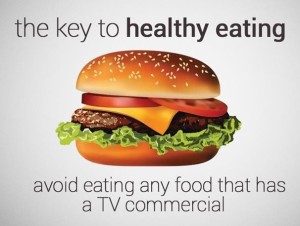
One study indicates that adults are also vulnerable to food ads.
The results showed that adults exposed to food advertising chose 28% more unhealthy snacks, compared to those who did not view food advertisements.
Regardless of your age, food advertising establishes social norms. Get in the habit of walking away from the television during commercials – or prerecord shows to allow for fast-forwarding through them.
Remember that when it comes to food, there is always a choice.
Base your eating habits on what fuels your personal health and well-being instead of allowing external factors to influence your decisions.
(published May 5, 2014)
 Brigid Titgemeier is a nutrition assistant at the Cleveland Clinic Wellness Institute. She is a contributor to health and nutrition articles for the Huffington Post, U.S. News and World Report, YouBeauty, and other web outlets. Brigid completed her Masters in Public Health Nutrition and dietetic internship at Case Western Reserve University in Cleveland, Ohio. Her professional interests include plant-based nutrition, field-to-fork initiatives, culinary nutrition, and corporate wellness.
Brigid Titgemeier is a nutrition assistant at the Cleveland Clinic Wellness Institute. She is a contributor to health and nutrition articles for the Huffington Post, U.S. News and World Report, YouBeauty, and other web outlets. Brigid completed her Masters in Public Health Nutrition and dietetic internship at Case Western Reserve University in Cleveland, Ohio. Her professional interests include plant-based nutrition, field-to-fork initiatives, culinary nutrition, and corporate wellness.


